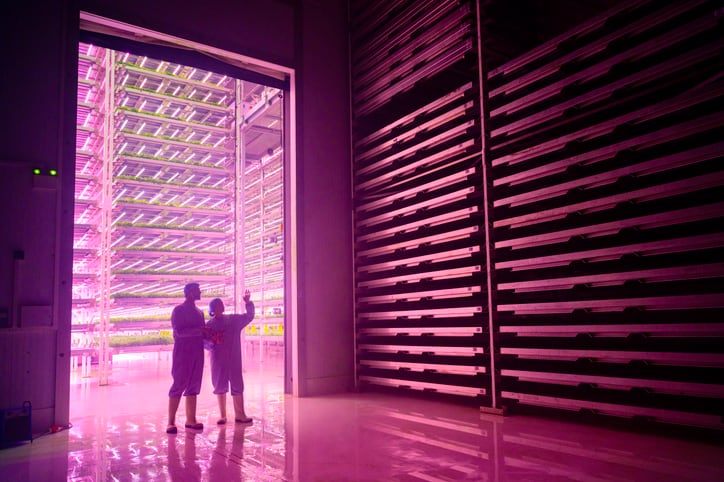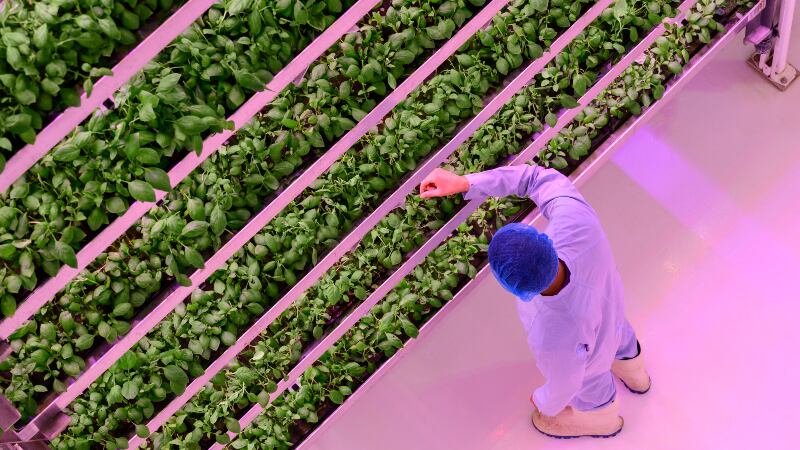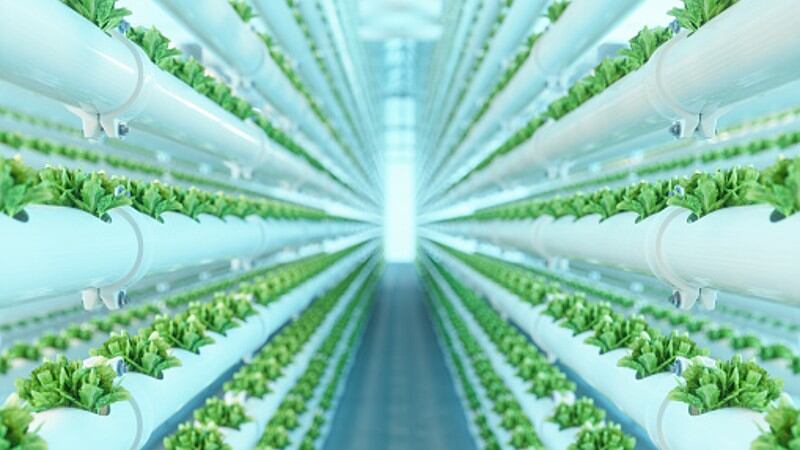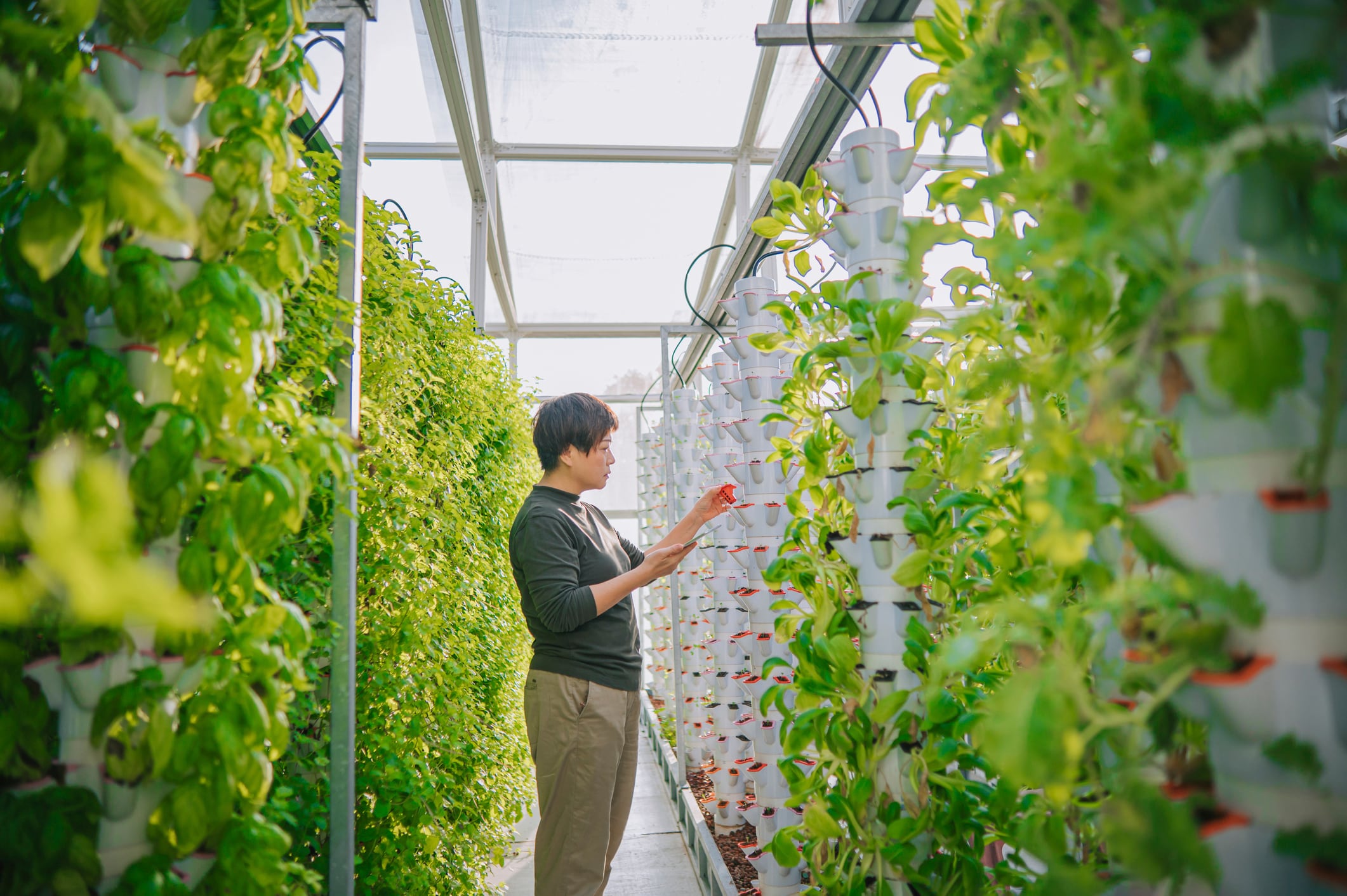There has been a slew of recent failures in the global CEA and vertical farming market. Players are faring better in the arid Middle East, however, where energy is cheaper and where climate change poses a particular and growing threat to agriculture and food security. Crops here are hard to grow outside. In the UAE, for example, 80% of the country’s fresh produce is imported because of the harsh climate, water scarcity, and non-arable land.
CEA and vertical farming offer reliable year-round crop production in any climate or location, with minimised water use. But steps are still needed to ease energy costs and improve the commercial viability of CEA and vertical farming in the region, according to a panel of industry experts and start-up founders who were speaking at the World Agri-Tech Summit in Dubai earlier this month.
Vertical farmers like Pure Harvest Smart Farms are looking to utilise renewable and solar energy sources to deal with the challenge of the high energy consumption necessary to operate. “Energy is a key element of us,” said Pure Harvest Founder and CEO Sky Kurtz. “We’re constantly trying to innovate to get increased output per unit of photonic energy.”
The company, which uses hydroponic technology to grow fruits and vegetables in desert climates, operates an 80% renewable powered vertical farm in Saudi Arabia, and will increasingly look to solar and other solutions to minimise its energy impact. For example, in South Korea, where it is trialling a low-cost vertical farming solution to produce animal feed, it is in discussions with a steel firm to harvest its waste heat. “They pump $40 million of heat into the air every month – we seek to harvest that,” Kurtz revealed.
“Because we’re a vertical farm, we [use] a lot of energy,” added Feras Al Soufi, General Manager of Bustanica, Emirates Crop One. This is a joint venture between Emirates Flight Catering, one of the world’s largest catering operations serving more than 100 airlines, and vertical farmer Crop One. The tie-up has enabled the opening of world’s largest hydroponic farm, backed to the tune of US$40 million. Located in Dubai, the 330,000 square foot facility is geared to produce more than 1,000,000 kilograms of leafy greens annually.
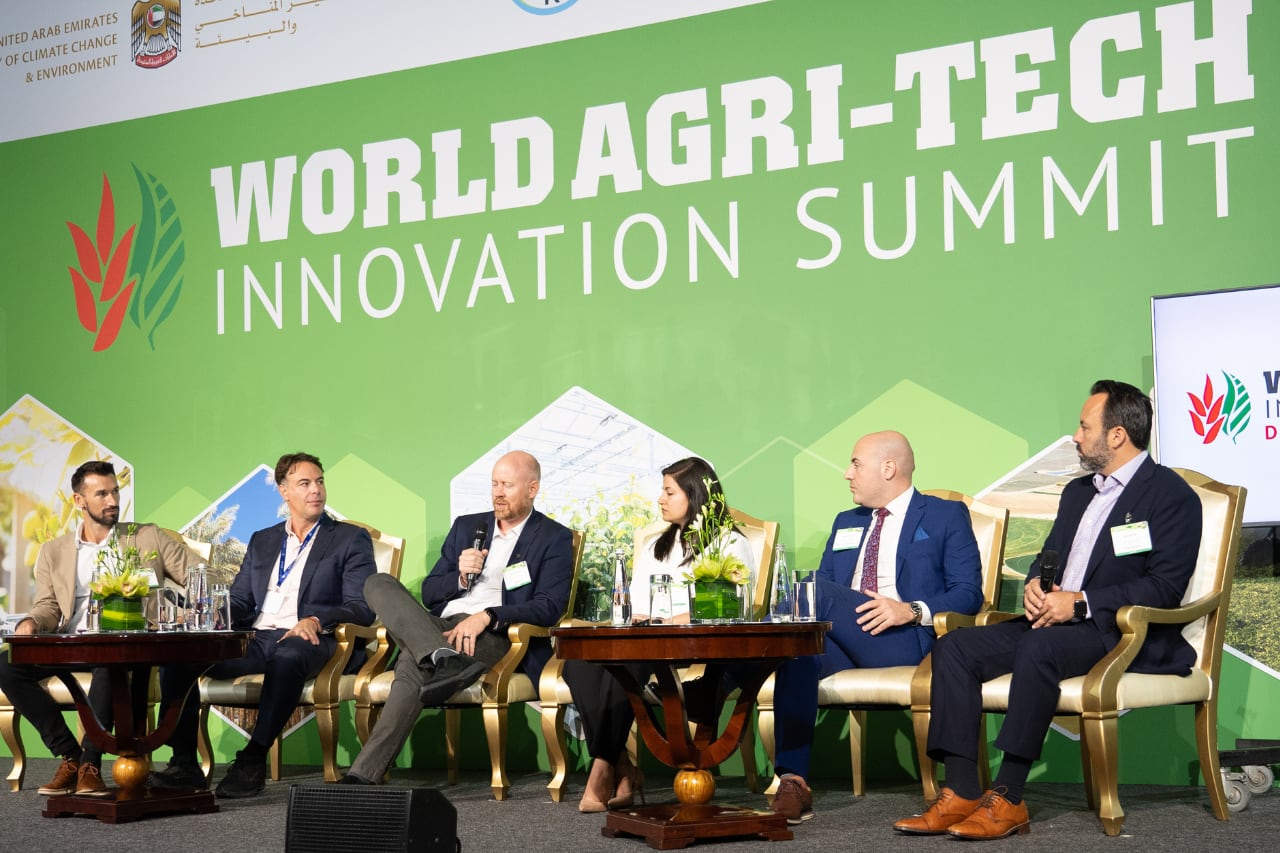
“We’re working towards finding more efficient ways of deploying both energy and water to grow food at the most efficient cost to get the freshest product out to customers [and] keep the supply chain really tight,” said Al Soufi.
The company is eyeing using renewable energy including nuclear in the near future. The technology keeps evolving, said Al Soufi. “We keep looking into different aspects.” In addition to solar panels and green roofs, solar cells integrated into a building’s glass facade" are all “great technology to harness power from”.
Khadija Hasan, founder and CEO of Dubai-based vertical farm start-up KRISPR, shared more examples of how vertical farms are working to reduce their energy footprint. “Most of our focus has been on trying to control the heat generation and the energy use coming out from the lights,” she said. “Improving air circulation, HVAC [heating, ventilation, and air conditioning] systems and lighting have been the three key steps we’ve taken to improve energy use itself.”
Harnessing the power of the sun
Energy, especially in a market like the Middle East, is not only abundant, but increasingly renewable, added Kurtz. He referred to a new report from the International Renewable Energy Agency on the progress of renewable energy in countries of the Gulf Cooperation Council (GCC). This suggested the GCC region has a unique opportunity to maintain a leading role in the global energy market. At less than US cents 2 per kilowatt hour (kWh), solar photovoltaic (PV) is now the least-cost option for power production in the GCC, outpacing natural gas, liquefied natural gas, oil, coal and nuclear power, according to the report.
The GCC boasts “nine of the 10 best and largest facilities ever and more are coming”, Kurtz declared.
What’s more, the UAE ranks second globally in terms of per capita solar energy consumption, according to the Energy Institute’s Statistical Review of World Energy. Energy giant Masdar has just unveiled the world’s largest single-site solar power plant in the country which will power almost 200,000 homes and eliminate over 2.4 million tonnes of carbon emissions every year.
Kurtz agreed that nuclear is an option for CEA and vertical farmers in the Middle East too. The Barakah nuclear power plant, the UAEs' first nuclear power station, is running at only 25% of capacity but still making a “massive dent” in the country’s total energy needs.
Why the Middle East needs vertical farms
This ability to harness the power of the sun means CEA and vertical farming business models in the Middle East boast an advantage over more clement climates. But they are also needed to counter huge demographic shifts in the region.
“The population of the world is growing in the Middle East, south Asia and Africa and shrinking or flat everywhere else,” explained Kurtz. “All of that growth is in a few specific areas and some of those areas are extremely water vulnerable and already either food or economically insecure.
“We need ultimately to produce food within 4,000 miles of the equator where all these people are,” he said. These areas tick the right boxes in terms of sunlight, land and costs of energy, labour, taxation and transportation. “But you have to solve climate. And to solve climate you need technology, and you need ideally renewable energy sources.”
Climate change combined with fast population growth has meant that protected agriculture has “exploded” in the Middle East’s hot climate, added Ryan Lefers, CEO and co-founder of RedSea. This start-up aims to take advantage of the sun, but minimise the heat. While most greenhouses are designed to keep plants warm in northern climates, RedSea offers a platform of technologies designed to keep crops cool in hot climates. One product – the iyris SecondSky roofs – can cut peak temperatures inside greenhouses by as much as 10 degrees Celsius. This is gives growers in hot climates savings in energy, water and fertiliser usage potentially boosting profitability and sustainability. “Plus we’re seeing that those farms are more efficient in terms of like labour efficiency because it’s just easier to work under,” said Lefers.
The problem with water desalination
Another company on the panel, Desolenator, aims to address the high carbon footprint and high operating costs of water desalination. That’s a big issue in the Middle East, home to 12 out the world’s 17 most water insecure countries. Most in the region therefore dependent on desalination plants for their water needs. The desalination process, or reverse osmosis, also creates an extremely salty wastewater known as brine, which can damage marine ecosystems and animals when it is pumped back into the sea.
Desolenator has patented and developed solar desalination technology that aims to become an affordable and environmentally friendly method of purifying water from any source. It wants to provide greenhouses and vertical farms with sustainable cooling solutions and pure water for irrigation. The solution offers over a thousand percent carbon saving versus reverse osmosis, claimed Desolenator Co-Founder & CCO Alexei Levene.


